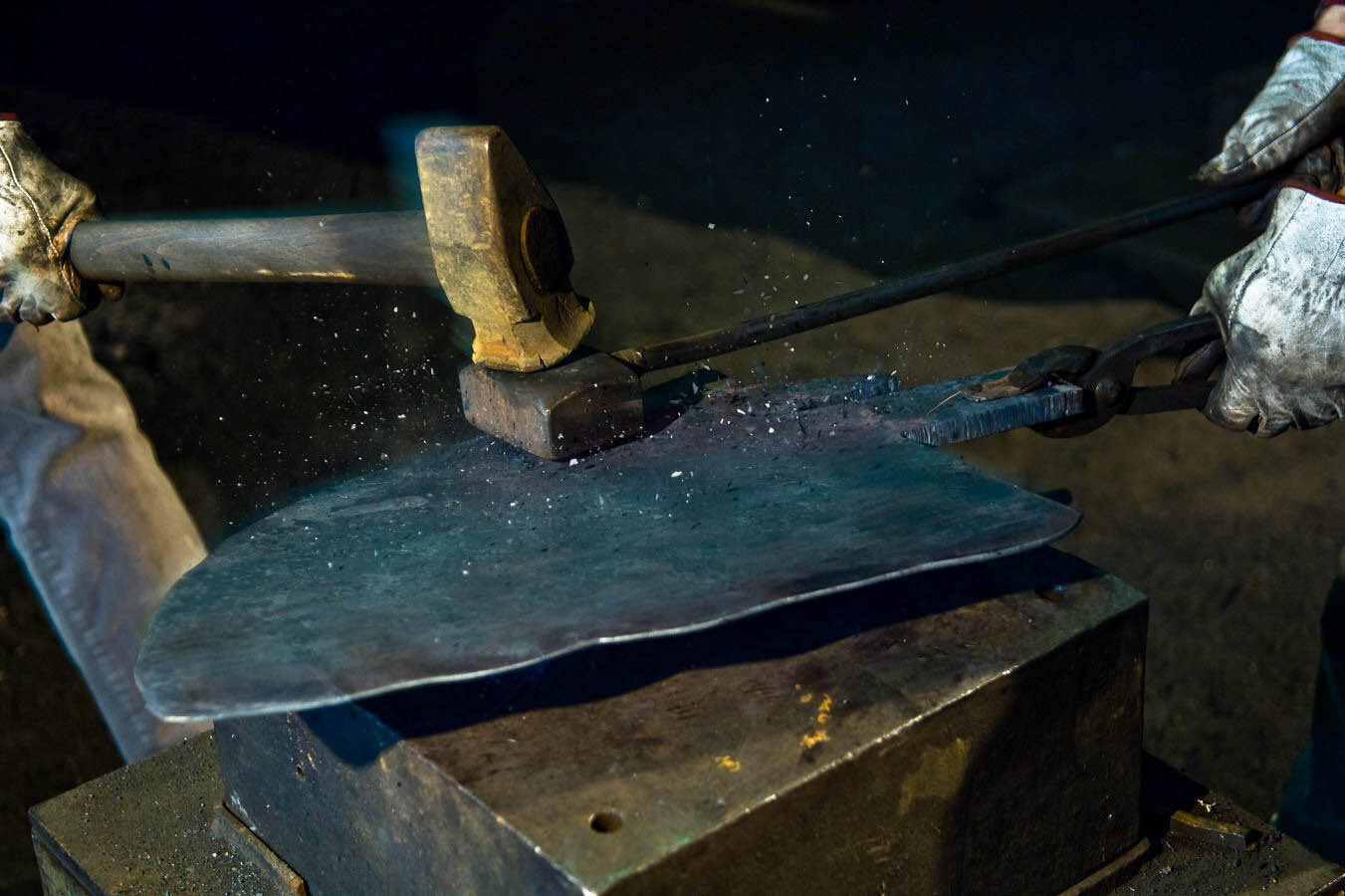The very rare photos of a blacksmith making the metal piece at the bow of the gondola!
The metal piece, made by hand, at the bow of a gondola
The shape of the “ferro di prua” has remained the same for centuries.
The „Fravi“ are the blacksmiths who make the „ferro“ (the decorative metal piece at the bow of he gondola) and others items in metal. In medieval Venice the „fravi“ played a decisive role in that they were the makers oft he tools used by almost all the others craftsmen. The “Fravo” applies his ancient art to the steel piece heated in a furnace, it is then worked by using a mallet and a hummer.
The blacksmith at work
The raw metal piece of the bow of the gondola
The elegance of the “ferro” lies in its tapering which was – and still is – a measure of the skill of the blacksmith: the thickness of the “ferro” decreases sideway from about eighteen to four millimetres. The shape of the “ferro di prua” has remained the same for centuries, although its size and proportions have varied. The “ferri” were forged in Cadore, an area in the Dolomites, that provided iron mines, timber and “squerarioli”, (carpenters specialized in the construction of wooden boats, including the gondola).
The “Fravi” were one of the first craftsmen who met in brotherhood more than one thousand years ago, and the had their own altar in the church of San Moisè. The Capitulate of the “Fravi” (“Mariègola” – mother of rules, in Venetian) dates back to 1271. A famous place name in Venice is “Calle dei Fabbri”.
Cutting the iron sheet from which the iron bow is obtained



